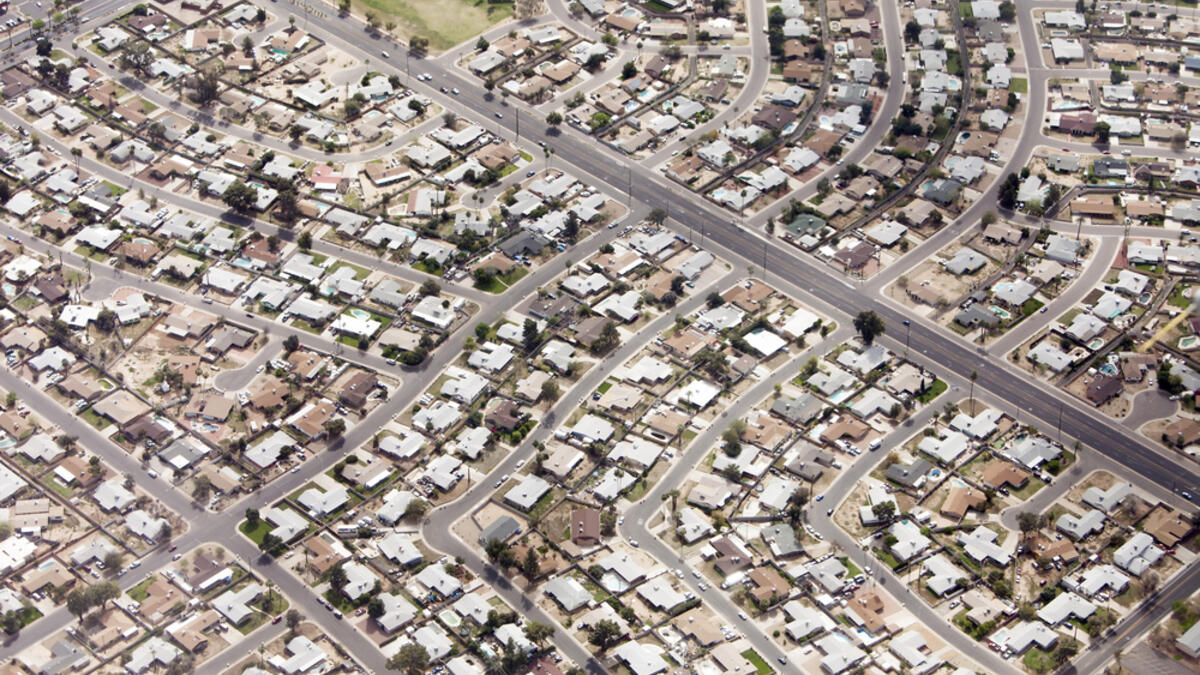ASU expert: Affirmatively Furthering Fair Housing act important for socially diverse neighborhoods

Photo courtesy DepositPhotos.com
Last month, the Trump administration announced they rescinded the Obama administration’s Affirmatively Furthering Fair Housing (AFFH) amendment of the Fair Housing Act. According to the White House’s fact sheet on the action, this repeal was done as an effort to end overregulation and to preserve local decision-making, with the proclamation that, “The suburb destruction will end with us.”
Deirdre Pfeiffer, associate professor of urban planning in ASU’s School of Geographical Sciences and Urban Planning, is an expert on neighborhoods and housing strategies in the United States. In the below Q&A, she explains the history of the AFFH, what she views as its strengths, her concerns about its repeal, and how local municipalities can continue making progress toward creating inclusionary and equitable neighborhoods despite the repeal.
Question: Can you describe what the AFFH is and why it was implemented during the Obama administration as provision of the Fair Housing Act of 1968?
Answer: AFFH stands for “Affirmatively Furthering Fair Housing.” What this means is to take steps to understand and address barriers to housing access that stem from race, nationality, color, religion, sex, family status and disability, which are classes of people protected through the Fair Housing Act. These barriers lead to neighborhood segregation, which is one of the leading causes of enduring social inequalities in the U.S.
AFFH is an original provision of the act and is frequently upheld by courts. Yet, the provision lacked teeth until the Obama administration’s 2015 rule, which required localities receiving U.S. Department of Housing and Urban Development (HUD) funds — about 4,600 communities — to use metrics to assess and plan to remedy barriers to housing access for protected classes.
Associate Professor Deirdre Pfeiffer
Q: Why would you say that the AFFH is an important aspect of the Fair Housing Act? What, if any, criticisms have there been for the AFFH?
A: The AFFH is critical in identifying policies and actions that contribute to neighborhood segregation through “disparate impacts.” Disparate impacts are causes that implicitly disadvantage protected classes in the housing market. An example is requiring one-acre lots for housing within a jurisdiction, which may increase housing prices and make it more difficult for Latino families — who earn lower incomes and have less wealth than white families — to live there. This is different from policies and actions that have discriminatory intent, another major cause of neighborhood segregation, which explicitly disadvantage protected classes in the housing market, e.g., charging higher rent to a prospective Latino renter than a white renter who shares similar characteristics.
One strength of the AFFH is its use of local knowledge to identify barriers to housing access for protected classes. When localities work with diverse stakeholders with related expertise, they help to build political will, infrastructure, and capacity for addressing these issues. Another strength of the AFFH is HUD’s provision of online data and mapping software to localities, which helps participants to explore barriers and develop a common language to talk about neighborhood segregation.
One weakness of the AFFH is that HUD requires localities to plan to address neighborhood segregation without offering a clear mechanism for determining whether plans are adequate. An overarching criticism of the AFFH is that it threatens localities’ ability to decide how best to use land within their jurisdictions, e.g., for large lot zoning.
Q: While the Fair Housing Act has a longer history, the AFFH is fairly new. In your research of neighborhoods, have you been able to attribute any positive or negative changes in neighborhoods related directly to the AFFH provision?
A: Research on the AFFH has just begun. What we do know is that 1) where you live strongly shapes your well-being, including your social mobility, or ability to earn more than your parents and 2) that lower-income folks are more likely to achieve social mobility when they have the opportunity to live in economically diverse communities. Thus, there are strong expectations that plans, policies and actions that work to increase economic diversity in neighborhoods can help to break cycles of poverty and close widening gaps in health, earnings and wealth, and other qualities necessary to thrive, which fall along racial and ethnic lines.
Q: President Trump has proclaimed that eliminating this provision from the Fair Housing Act will increase home prices and reduce crime rates in neighborhoods, tweeting: “I am happy to inform all of the people living their suburban lifestyle dream that you will no longer be bothered or financially hurt by having low income housing built in your neighborhood ... Your housing prices will go up based on the market, and crime will go down. I have rescinded the Obama-Biden AFFH Rule. Enjoy!” As an expert in neighborhoods, what are your thoughts on this claim? Are there other factors that need to be considered?
A: There are no universal cause and effect relationships between building affordable housing and property values and crime; rather, whether affordable housing affects these outcomes, if at all, depends on current conditions in the community and plans for design and management, such as the quality and quantity of the existing and proposed housing. President Trump’s claim notably leaves out the possibility that affordable housing might actually increase property values and decrease crime. For instance, neighborhood property values may increase if the design standards of the proposed housing exceed current standards in the community.
President Trump’s claim doesn’t address these nuances, because it isn’t really about property values or crime; rather, he’s using racial “code words” to indirectly tell suburban homeowners that they no longer have to worry about people of color coming into their communities. This is ironic, given that most people of color, and low-income people, are already suburbanites. There is a long history in the U.S. of using code words associated with property values and crime to refer to people of color, particularly in response to actions that may increase racial integration. The association between people of color and the code word “property devaluation” traces to the Home Owners Loan Corporation and the Federal Housing Administration in the 1930s to 1950s. These institutions infamously refused to insure mortgages used to purchase homes in racially diverse neighborhoods, arguing that the presence of people of color devalued homes in these communities.
Q: With this repeal, what are our neighborhoods and our neighbors at risk of missing out on?
A: We risk failing to build critical social skills that young people will need to thrive in our soon-to-be “majority minority” nation. One example is cultural competency, or the ability to distinguish and engage with others’ cultural values and practices, e.g., ways of communicating or making decisions. We acquire this and other critical social skills from learning to live, work and play in socially diverse environments. We also risk peace and security. Social strife, like the current Black Lives Matter protest movement, will and should continue as long as local policies sort people of color into inferior neighborhoods.
Q: With those elements listed in your answer to the previous question in mind, what can communities and local governments do to continue to offer those benefits that were created by AFFH?
A: We need to advocate for changes to state laws that limit the tools localities can use to address neighborhood segregation. Inclusionary housing, which enables local governments to require developers to build economically diverse housing, is an example of a tool that is banned in Arizona that is widely used to increase housing affordability and racial and economic integration. We also need to build our civic infrastructure and political will for dismantling racial and economic segregation in our communities by identifying and engaging diverse actors with relevant expertise, such as affordable and fair housing groups, members of the real estate industry, and leaders of local homeowners’ associations (HOAs) and communities of color. We should formalize and support their engagement through structures like task forces and dedicated funding streams.
Q: Anything else you would like to add?
A: Folks wanting to learn more about fair housing issues are highly encouraged to connect with the Southwest Fair Housing Council, which has advocated for equal opportunity in access to housing in Arizona since 1986.
More Law, journalism and politics

Arizona secretary of state encourages students to vote
Arizona Secretary of State Adrian Fontes looked right and left, taking in the more than 100 students who gathered to hear him…

Peace advocate Bernice A. King to speak at ASU in October
Bernice A. King is committed to creating a more peaceful, just and humane world through nonviolent social change.“We cannot…

CNN’s Wolf Blitzer to receive 41st Walter Cronkite Award for Excellence in Journalism
Wolf Blitzer, the longtime CNN journalist and anchor of “The Situation Room With Wolf Blitzer,” will accept the 41st Walter…
